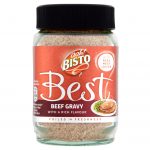National Pig Association urges caution on ‘Method of Production’ labelling
The National Pig Association (NPA) has urged caution on calls to introduce ‘Method of Production’ labelling on meat products, in particular pork.

There is likely to be significant cost involved in ensuring pork is labelled accurately.
The subject is due to be discussed today (13th November) at a Westminster Forum event in London on the future of food labelling in the UK.
The British pig sector already uses an established voluntary Code of Practice which defines several terms related to pig production methods, such as ‘outdoor bred’, ‘outdoor reared’ and ‘free range’.
NPA says it understands the desire expressed by some groups to label meat products with specific definitions of how the animals used to produce them were reared, including for pigs reared indoors.
However, it has warned that applying this to pork products would be extremely complex and could end up misleading consumers, as well as being unnecessary.
NPA senior policy advisor Georgina Crayford said: “There is already good consistency in the use of production method labels on pork and this information is available for those consumers that are interested.
“The Red Tractor logo is also a useful indication to consumers that the product they are purchasing has been produced in Britain and can be fully traced back to the farm.
“Pig production systems employed in the UK are highly diverse and difficult to categorise into simple terms. For example, a pig may be born outside and then reared in different types of indoor accommodation at different stages.
“Similarly, much of the pork from a pig reared as free range or outdoor bred/reared is sold as conventionally reared pork at a standard price. It would be very difficult to design a clear label in these cases.”
Crayford continued to explain that there is also likely to be significant cost involved in ensuring pork, especially when used as an ingredient within other products, is labelled accurately and in a meaningful way.
“We believe there is a limit to the amount of useful and easy-to-understand information that can be put on food labels, and this is something that has been explored through Defra commissioned research.
“Going beyond what is already required by law is likely to lead to greater rather than less confusion amongst consumers.
“The NPA believes it would be better to focus on improving awareness of existing labels, before looking at extending further labelling requirements through law.”

 Premier Foods CEO to step down
Premier Foods CEO to step down Beef prices hold higher than last year
Beef prices hold higher than last year
